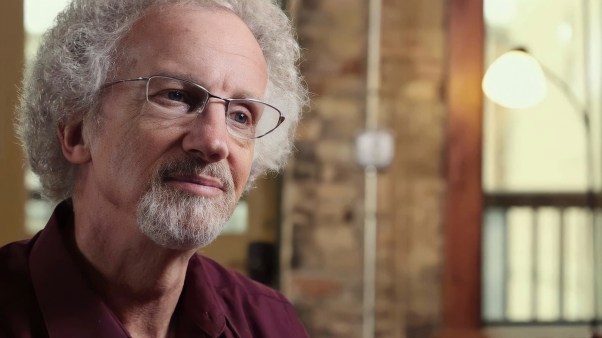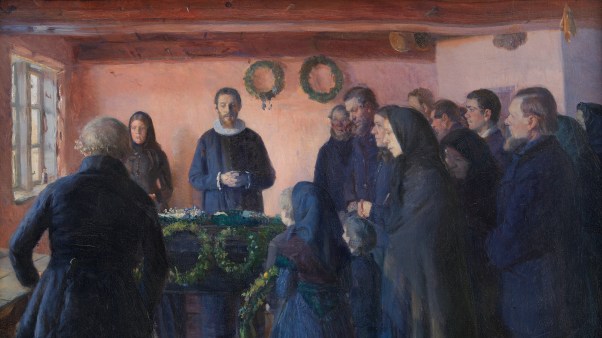After Italy invaded Ethiopia in 1935, Western missionaries fled or were forced to leave. Among them were the first two missionaries from Sudan Interior Mission (now SIM), who had planted a church in Sidama, a southern region known for growing coffee. They were attacked on the road and killed. After the Italian occupiers were expelled, SIM sent four more missionaries to Sidama; three were soon killed.
Mourning their losses, Sidama congregations swore an unconventional oath: “We must avenge their deaths by sending out our own missionaries.”
Despite persecution and turmoil, the churches began to do as they had promised. Agedachew Anebo said many of his fellow Christian leaders in Sidama, where the latest census found 4 in 5 people are now Protestants, still recall this story today. One denomination, the Ethiopian Kale Heywet (Word of Life) Church, now has more than 1,000 Sidama congregations supporting more than 250 missionaries across Ethiopia and other nations.
These churches are leading what could be the world’s next major missionary movement.
In Ethiopia, evangelicalism is growing at a faster rate than even the booming general population, already the second-largest in Africa and projected to exceed 112 million people by 2020. According to the World Christian Database, in 1970 the Horn of Africa nation had about 900,000 self-identifying evangelicals, about 3 percent of its total population. By 2015, that number swelled to almost 19 million, or 19 percent of Ethiopians.
Each week, evangelical Christians across Ethiopia gather in buildings ranging from small mud huts to massive megachurches. In the capital, Addis Ababa, signs for new churches and home groups seem to spring up daily. As congregations mature, many articulate a vision that stretches beyond their walls—whether mud or concrete.
The two largest evangelical denominations in Ethiopia began in collaboration with Western missions organizations: the Ethiopian Evangelical Church Mekane Yesus (Dwelling of Jesus) was founded in the late 1800s with the help of Swedish Lutheran missionaries, and Kale Heywet was founded in the 1920s with SIM. Now they claim more than 9 million and 7 million members, respectively. And both denominations have embarked on international missions work of their own.
Mekane Yesus has sent 21 missionary families outside of Ethiopia since the formation of its International Mission Society in 2009. These missionaries are funded by Ethiopian congregations and currently work in neighboring Eritrea and Somalia, as well as in Chad, Mali, several Middle Eastern countries, and as far away as Pakistan.
Each year in January, Mekane Yesus designates a single “Mission Sunday” across its congregations. In 2012, its members gave only 12,000 birr (about $412 today); in 2017, giving topped 3 million birr ($107,000). In conjunction with year-round financial support from individual churches, this money is used to support the denomination’s missionaries in the field.
“Our plan is quite ambitious,” said Wondimu Game, the society’s director, who is currently studying missiology at Concordia Seminary in St. Louis. “The plan is to send 500 missionaries out in the next 10 years.”
In 2012, SIM created an East Africa sending office in Addis Ababa to support local churches sending missionaries abroad with back-end operations such as training and insurance. Through this office, Kale Heywet has sent 37 missionary families to countries including Sudan, Ghana, Malawi, Zambia, Bangladesh, India, and Pakistan, and more are preparing to leave in coming months. These missionaries are primarily involved in evangelism and church planting, and each is supported financially by sending churches in Ethiopia.
Addis is the fastest-growing of SIM’s 14 sending offices, said Joshua Bogunjoko, a Nigerian serving as SIM’s international director. More than 20 families await placements. “This is the result of the growth and maturity of the church in Ethiopia,” he said.
However, Ethiopia’s churches have a long way to go before they reach the scale of the world’s leading sending countries. According to World Christian Database projections, in 2020 the United States will send out 135,000 missionaries, Brazil 40,000, South Korea 35,000, the Philippines 25,000, and Nigeria 20,000. Yet it’s clear the turning outward of the Sidama church around World War II is now occurring across Ethiopia.
Local missions go global
Samuel Kebreab, a former evangelist who serves on the sending office’s board, said the Ethiopian movement toward international missions began after the fall of the country’s communist Derg regime in 1991. “After that, the church began to mature,” he said. “Western congregations that were partnering with Kale Heywet and Mekane Yesus began to think of the Ethiopian church as a partner that would also contribute to global mission work.”
Samuel [Ethiopians go by their given names] is also the Horn of Africa regional coordinator for the Movement for African National Initiatives (MANI), a network that mobilizes African Christians to fulfill the Great Commission. “Africa is a young continent,” he said, noting 6 in 10 residents are under 30. “Soon the main harvest force will come from Africa.”
Like many of the leaders interviewed by CT, Samuel sees sending missionaries internationally as a necessary response to the role foreign missionaries historically played in encouraging Ethiopia’s evangelical movement. “These people have come all the way and didn’t spare their lives, so we should do the same and go to other countries,” he said. “That has created a good legacy—a tradition.”
Worku Hailemariam, director of the Addis office, agrees. “We have been on the receiving end for years, for decades, even centuries,” he said. “We have to be involved in missions—local and global. The time has come.”
However, ties to the Western missions movement of the 19th and 20th centuries have not always motivated Ethiopian involvement in global missions. One of the primary barriers has been the perception that taking the gospel to other nations was the responsibility of the West. “We considered ourselves to be the mission field,” Wondimu said. “Some people say, ‘It’s not our responsibility.’” In response, he tells them, “Missions is not a Western responsibility; it is the church’s responsibility.”
Following this crucial shift in perspective—brought on by church growth and the removal of religious restrictions following the collapse of the Derg military junta—missionary activity outside of Ethiopia began relatively quickly because the foundations for cross-cultural mobility were already laid.
Though sparked by the work of Western missionaries, the spread of evangelicalism in Ethiopia was historically facilitated by local evangelists sent from one ethnic group to another. “Ethiopian churches have always encouraged missionaries to go and do ministry cross-culturally,” Worku said, “to new areas where the gospel had not yet gone.”
As a church grew, they would fund one of their own members to go live and work among a different people group, often on the other side of the country. “If someone was coming from the southern part of Ethiopia, he would go to the north or to the eastern . . . or the western part,” he said. “Each is a totally new language, a new people group, [and] a new context.” (This has led to tensions with the much larger Ethiopian Orthodox Tewahedo Church, which due to its long history and close relationship with the government has a sense of traditional jurisdiction over Ethiopia and resists such missionaries.)
Only recently have local evangelists begun to be called “missionaries.” Before their sending congregations began to look outside Ethiopia’s borders and prioritize international missions, these workers were known simply as wengel meliktinyaoch: “messengers of the gospel.” Now, however, they have begun to be seen as part of the same cross-cultural endeavor to complete the Great Commission.
The vast majority of Kale Heywet’s cross-cultural missionaries—more than 1,500 of them—still work within Ethiopia. “The local mission is a part of the global mission,” Worku said. “We cannot talk about [one] without referring to the [other].
However, at the sending office, he says they are “now asking, ‘Can you give us a tithe? Out of 10 [people], can you give us one missionary to do global mission?’”
‘This is our people.’
Unlike many Western missionaries, whose cross-cultural experience can be limited prior to being sent overseas, Christians in Ethiopia often have navigated different cultures and languages from an early age. Among a vast population encompassing over 80 distinct ethnic and linguistic groups, many Ethiopians are already fluent in two or three languages.
“That by itself is a training ground for missionaries,” said Samuel, who sees the cultural agility of Ethiopian Christians as an asset. He notes that cross-cultural work within Ethiopia is required for Mekane Yesus missionaries to even be considered for international placement. “If they don’t have cross-cultural exposure, probably they are not fit.”
 SIM East Africa
SIM East AfricaOnce commissioned, Ethiopians often find opportunities that are rarely available to missionaries from the West. For example, both Mekane Yesus and Kale Heywet currently have missionaries working among the Fulani, a mostly Muslim people group of nomadic herders numbering over 40 million that is dispersed throughout 20 African countries and currently best known for deadly clashes with Christian farmers in Nigeria.
Ethiopian missionaries are uniquely situated for this context. “The [skin] color similarity by itself can be an opportunity for ministry,” Worku said. “Sometimes the tribes are saying, ‘Our people are Ethiopian.’ When you see Fulanis, they look very much like Ethiopians. They say, ‘This is our people.’”
Ethiopians often transition easily into Muslim contexts. “Especially in Islamic countries, [locals] often prefer non-Western missionaries,” Worku said. For Ethiopians, that favor has deep historical roots. In one of the hadiths, Muhammad forbids his followers from harming the Habesha (Ethiopian) people. According to tradition, many of the first followers of Islam’s prophet took refuge with Ethiopia’s king after facing persecution in Mecca. Thus, many Muslims today feel an obligation to welcome Ethiopians.
But Ethiopians are not just taking the gospel to contexts unreached by Western missionaries. “We focus on Muslim-dominated countries, but we look to Western countries as well,” Worku said.
High costs of living, however, can make working in the US or Europe more difficult than working in contexts more dangerous for Christians. “The greatest challenge by far is finances,” Bogunjoko said. “It is much more expensive to live outside your country, and churches sometimes do not understand why it is so expensive.” Last year, one Kale Heywet missionary returned from Edinburgh, Scotland, after only a year in the field because of financial difficulties.
Yet Kale Heywet and Mekane Yesus hope to mobilize the Ethiopian diaspora churches to be more missions-focused, seeing them as ready-made resources to deploy. (The Tewahedo church has a similar diaspora effort but focuses on sending priests to perform the liturgy.)
One example of an Ethiopian missionary to the US is Mehari Korcho, currently working in Denver for Near Frontiers, an evangelical missions group focused on immigrants in America. His focus is on mobilizing the 140 Ethiopian diaspora churches in the US to be on mission to the people around them, coordinating with local churches for the sake of the gospel.
“I have a great passion for unity among the body of Christ. I don’t want people from the Global South to repeat history,” he said. “In the past, the West has been on mission alone. . . . We didn’t get a chance to work together. Now there is a tremendous opportunity for all of us to work together . . . instead of just believing in turns.”
The leaders of this movement see the missionaries being sent out of Ethiopia as an example of a larger phenomenon, one that can lead to greater unity in the global church.
Bogunjoko, who first served as a missionary commissioned by the Nigerian church and sent with SIM to Niger, also sees the future of missions as global. “A thriving global church—not just in the Global South or the [West]—would be a church that is mutually supportive,” he said. “Supportive in the sense that they see each others’ strengths and allow one another to bring those strengths to the table so that they can move forward in taking the gospel of Jesus Christ to the rest of the world.
“We don’t see the church as having one side that is mature [and] there to teach the other side,” Bogunjoko said. “We recognize that both sides are maturing, and both sides have something to learn from each other.
“The reality is that we can serve each others’ contexts in ways that we may not be able to serve our own.”
Jack Bryan is a Princeton University graduate raised in Ethiopia.
Have something to say about this topic? Let us know here.











